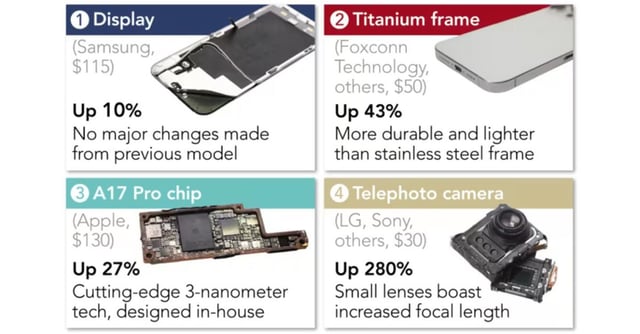Overview
- Apple's production costs for its iPhone handsets have been steadily increasing, with a 10% rise this year and a 20% increase in 2022, driven by escalating costs for components such as the A17 Pro chip, titanium phone frames, and the display.
- Despite the mounting production costs, Apple has largely absorbed these increases to maintain stable retail prices for the iPhone in the U.S., although the price of the iPhone 15 Pro Max saw a $100 hike due to new features and advancements.
- The key features increasing the iPhone 15 Pro Max's production cost include the new 5x telephoto camera which is three times more expensive than the previous model, a 3nm process in fabricating the A17 Pro chipset, and the replacement of stainless steel with pricier titanium for the phone's frame.
- Apple was able to offset some of these rising production costs with savings from falling prices of NAND flash memory chips used for internal storage. For instance, the lowest-priced 15 Pro Max model comes with the double storage of the 14 Pro Max but the cost was only 5% dearer.
- Analysts suggest that for the upcoming iPhone 16, Apple may have to break its practice of absorbing rising costs and instead pass them onto consumers by pushing the price of the handsets higher, making the iPhone 16 potentially the most expensive model to date.


